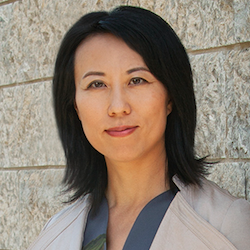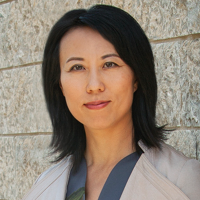Une note liminaire de Vina Nadjibulla, vice-présidente, Recherche et stratégie

Le retour de Donald Trump au pouvoir a amplifié le sentiment d'incertitude dans la région indo-pacifique, posant de nouveaux défis pour Stratégie en évolution du Canada pour l'Indo-Pacifique et ses relations clés en Asie. Face à la menace des tarifs douaniers, aux changements des dynamiques de sécurité et des priorités internes, les décideurs politiques canadiens ainsi que les entreprises doivent évaluer comment préserver au mieux leurs intérêts et gérer les relations avec les économies clés de l'Indo-Pacifique.
Deborah Elms examine l'impact d'un second mandat Trump sur les chaînes d'approvisionnement et le climat d'affaires en Asie, en particulier les économies du Sud-Est asiatique, telles que le Vietnam, qui a bénéficié du premier mandat Trump, mais qui est désormais confrontée à l'incertitude en 2025.
Jia Wang explore l'évolution des relations entre le Canada et la Chine dans un contexte caractérisé par les tensions commerciales croissantes entre les États-Unis et la Chine, et des inquiétudes d'ingérence dans le milieu politique canadien. Elle met en garde qu'un intérêt chinois décroissant pour les exportations canadiennes, accompagné d'une bande passante politique limitée à Ottawa, pourrait présager plus de difficultés à venir.
Stephen Nagy se penche sur les relations entre le Canada et le Japon, soutenant que le climat politique changeant à Ottawa comme à Tokyo pourrait limiter l'engagement à haut niveau cette année. Bien que la présidence du Canada au G7 soit une opportunité unique pour avancer la coopération sur la sécurité économique, l'intelligence artificielle et d'autres priorités partagées.
Sanjay Ruparelia évalue les perspectives des relations entre le Canada et l'Inde, qui subissent actuellement une dégradation historique. Il soutient qu'un nouveau gouvernement à Ottawa pourrait signifier une réinitialisation que New Delhi accepterait, créant ainsi des opportunités pour restaurer et revitaliser les liens bilatéraux.
Patrick Leblond examine les turbulences que pourraient causer les politiques étrangères de Trump tout en rappelant que les objectifs du Canada en Indo-Pacifique demeurent valides. Tandis que les relations avec la Chine resteraient instables, il souligne la nécessité de redoubler d'efforts en Asie du Sud-Est, y compris la finalisation d'un accord de libre-échange Canada-ANASE, pour préserver la pertinence du Canada comme partenaire dans la région.
Dans l'ensemble, ces réflexions mettent l'accent sur l'importance continue de la Stratégie du Canada pour l'Indo-Pacifique. Même durant les transitions de pouvoir, les menaces tarifaires et la compétition intensifiée entre puissances majeures, il reste à Ottawa beaucoup à faire pour renforcer le commerce, soutenir la coopération sécuritaire et se positionner comme acteur constructif dans une région dynamique.
Deborah K. Elms: La tempête Trump s’approche de l’Asie
Donald Trump, qui s’apprête à revenir au pouvoir aux États-Unis, n’a pas attendu son investiture pour commencer à perturber les relations commerciales. Le 25 novembre 2024, il a menacé d’imposer des droits de douane de 25 % sur tous les produits provenant du Canada et du Mexique et de 10 % sur les produits provenant la Chine, notamment afin de réduire le flux de migrants et les expéditions de fentanyl au pays.

On ignore encore si les menaces concernant les droits de douane seront concrétisées ou si leur ampleur sera revue à la baisse, car Trump a menacé de troubler les échanges commerciaux avec bon nombre d’autres pays. Quoi qu’il en soit, ses agissements depuis l’élection révèlent sa volonté d’utiliser les droits de douane pour régler une vaste gamme de problèmes et de jouer dur avec ses alliés tout en faisant front à ses adversaires.
Le premier mandat présidentiel de Trump a eu du bon et du mauvais en matière de commerce dans la majeure partie de l’Asie. La région tributaire des exportations possède ses propres chaînes d’approvisionnement complètes depuis des décennies. La majeure partie des extrants finaux relatifs au commerce de produits manufacturés est destinée au marché américain, qui demeure extrêmement lucratif pour les entreprises basées en Asie.
Les échanges commerciaux ont également connu une période de perturbation pendant le premier mandat présidentiel de Trump, puisque c’est à cette époque que les États-Unis ont commencé à imposer des droits de douane sur les importations chinoises. Ces droits de douane se chiffraient en moyenne à un peu moins de 20 % en 2018. Les entreprises dont le mandat consistait à fournir des produits finaux aux États-Unis ont donc commencé à se tourner vers des sources de production hors Chine.
Cette tendance a accéléré les changements qui s’opéraient depuis un certain temps déjà dans la région. Les entreprises – y compris les entreprises chinoises – cherchaient à s’approvisionner selon le concept « Chine plus un » afin de répartir le risque et de réduire les coûts avant que Trump arrive au pouvoir en 2017. La pandémie de COVID-19 a précipité les plans de restructuration interne des entreprises, alors que les entreprises ont rapidement adapté leur production pour éviter la fermeture des frontières, gérer les pics de demande et limiter les perturbations soudaines de l’offre.
Une grande partie de la diversification a entraîné une hausse de la production de produits manufacturés, en particulier les pièces et les composants ainsi que l’assemblage final, partout en Asie. Le Vietnam a particulièrement bénéficié de ces modifications, puisque ses activités commerciales avec les États-Unis ont atteint 745 milliards $ US à la fin de 2024.
Le Vietnam, comme d’autres pays de la région, avait déjà commencé à mettre en œuvre ses propres réformes et adaptations structurelles pour favoriser une croissance économique supplémentaire. Cela comprenait la négociation et l’entrée en vigueur de divers accords commerciaux, comme un accord de libre-échange avec l’Union européenne, le Partenariat économique intégral régional avec 15 pays d’Asie ainsi que l’élargissement de l’Accord de partenariat transpacifique global et progressiste avec l’adhésion du Royaume-Uni en décembre 2024. Chacun de ces accords a permis aux entreprises basées au Vietnam d’accéder à d’importants marchés partout dans le monde, qui n’ont souvent pas de droits de douane et qui offrent de meilleurs services ainsi que des possibilités d’investissement.
Bien que l’excédent bilatéral croissant du Vietnam au chapitre des biens par rapport aux États-Unis soit susceptible de faire du pays une autre cible de Trump, la toile d’accords commerciaux qu’il a conclus avec d’autres pays l’aidera à amortir les effets des perturbations. La plupart des autres pays d’Asie ont des engagements commerciaux semblables.
Ces liens économiques seront mis à rude épreuve dans un avenir rapproché. Trump a un faible pour les droits de douane, mais ces derniers ne seront pas son seul levier. Il sera difficile et coûteux pour les entreprises de la région, en particulier celles de la Chine, de gérer la surveillance plus étroite des intrants du secteur manufacturier. Les économies qui ont tiré parti du premier mandat présidentiel de Trump pourraient donc avoir de la difficulté à garder la tête hors de l’eau cette fois-ci.
Jia Wang: Relations entre le Canada et la Chine en 2025 : plus d’incertitude, mais des améliorations possibles
Les relations bilatérales sont demeurées tendues l’an dernier, principalement en raison des enquêtes sur l’ingérence chinoise, des tensions géopolitiques en cours ainsi que des nouveaux droits douaniers canadiens sur les véhicules électriques, l’aluminium et l’acier chinois. Or, Ottawa est parvenu à rouvrir les canaux de communication avec les hauts dirigeants chinois et à stabiliser sa relation avec Beijing. La visite surprise de la ministre canadienne des Affaires étrangères, Mélanie Joly, en Chine en juillet dernier et la reprise subséquente des vols fréquents entre les deux pays semblent indiquer un certain retour à une diplomatie pragmatique.

Or, le début du deuxième mandat présidentiel de Trump et un changement de garde à Ottawa risquent de perturber cette stabilité naissante.
L’approche transactionnelle, impulsive et isolationniste de Trump en matière d’affaires étrangères, de sécurité et de commerce international – des sphères où la Chine demeure la principale rivale des États-Unis – compliquera la tâche du Canada. Avant même d’entrer en poste, le président désigné a promis d’imposer des droits de douane radicaux sur les exportations chinoises, mais a exprimé sa volonté de collaborer avec « son ami » le président chinois Xi Jinping pour possiblement régler tous les problèmes du monde. En s’efforçant de s’adapter aux diverses tactiques qu’emploie Washington pour négocier avec Beijing, le Canada pourrait faire peser une plus grande incertitude sur sa relation avec la Chine.
L’idéologie et les valeurs démocratiques ne sont pas des considérations importantes pour Trump, et ce, même si certaines des personnes qu’il devrait nommer à son cabinet, comme Marco Rubio (possible secrétaire d’État) et Mike Waltz (possible conseiller à la sécurité nationale) ont des points de vue différents. Il est très possible que Trump considère les alliés stratégiques des États-Unis comme de simples partenaires transactionnels dont il faudra assurer la protection en échange d’argent. Le Canada ne pourra plus autant compter sur l’aide des États-Unis pour surmonter les difficultés qu’il éprouve avec Beijing.
Alors que les États-Unis accélèrent leur retrait du multilatéralisme, le Canada fera face à une dynamique changeante caractérisée par une multipolarité croissante et une plus grande présence de la Chine dans divers domaines mondiaux (économie, sécurité, technologie, environnement et plus encore) et dans des organisations internationales comme l’OMC et l’ONU.
Ottawa devra renforcer sa collaboration avec ses alliés européens et indo-pacifiques si le Canada prévoit de poursuivre sa stratégie fondée sur des valeurs pour contrer l’influence de la Chine. Le Canada pourrait cependant trouver un terrain d’entente avec la Chine en vue de maintenir et de réformer les cadres multilatéraux, en particulier ceux relatifs au commerce et aux changements climatiques.
Les spécialistes des questions chinoises soutiennent que Beijing est mieux préparée à négocier avec Washington que lorsque Trump a pris le pouvoir la première fois. En tant que seul autre membre du Groupe des deux, la Chine semble prête à dialoguer directement avec Trump pour lui proposer des « victoires personnelles », sans toutefois lui faire de cadeaux à la table de négociation. Les mesures que la Chine a rapidement adoptées à l’encontre des nouvelles politiques mises en place par les États-Unis pour contrôler l’importation des puces chinoises annoncent une tendance à l’adoption de dispositions plus sévères. Les négociations directes entre les deux plus grandes économies du monde pourraient être défavorables pour le Canada. Les agriculteurs et les producteurs d’énergie canadiens pourraient ressentir des effets si la Chine acceptait de s’approvisionner davantage en produits agricoles et énergétiques auprès des États-Unis, comme ce fut le cas dans le cadre de l’accord conclu, puis abandonné, lors du premier mandat présidentiel de Trump.
L’économie chinoise sera confrontée à des difficultés considérables en 2025, et celles-ci auront des répercussions sur le Canada. Si la croissance du PIB de la Chine continue de ralentir comme prévu, le Canada ressentira les effets de la stagnation des cours mondiaux des produits de base et d’un marché mondial morose. Même si le volume des échanges commerciaux bilatéraux n’a pas cessé de croître malgré des relations tendues entre Ottawa et Beijing au cours des dernières années, de nouvelles possibilités et de nouveaux obstacles voient le jour.
Pour renforcer sa résilience économique avant le deuxième mandat présidentiel de Trump, la Chine a mis en place de nouvelles mesures incitatives, comme une réduction des droits de douane pour stimuler le commerce avec les pays tiers, comme l’Inde, le Japon, l’Australie, les pays européens et d’autres pays voisins d’Asie. Les droits de douane que Trump menace d’imposer à ses alliés et à ses rivaux incitent la Chine à nouer des relations avec des économies en développement et des économies avancées, y compris le Canada.
Un yuan et un dollar canadien plus faibles que le dollar américain et les pressions ressenties pour réduire la dépendance au marché américain pourraient motiver les deux pays à intensifier leurs échanges commerciaux en 2025.
Une nouvelle source de friction a récemment vu le jour lorsque le gouvernement canadien a proposé de nouvelles surtaxes qui tiennent compte de la position des États-Unis sur les produits solaires, les minéraux critiques, les semiconducteurs et d’autres produits exportés chinois. Une fois mises en place, ces surtaxes inciteront sans doute Beijing à répliquer.
Comme la consommation intérieure demeure faible malgré les récentes mesures de relance et de possibles nouvelles subventions, les dirigeants chinois sont déterminés à stimuler les activités de fabrication de pointe du pays (en particulier pour les véhicules électriques, les batteries et les composants solaires) à l’aide d’une approche pansociétale qui pourrait renforcer l’exportation massive chinoise vers les marchés étrangers. Des droits supplémentaires sur les exportations chinoises et une faible demande de produits canadiens sont des scénarios possibles pour 2025.
Étant donné la capacité supérieure requise pour gérer la relation avec le partenaire commercial le plus important du Canada, Ottawa devrait disposer, quel que soit le parti au pouvoir, de peu de ressources pour s’occuper des autres priorités internationales. La stratégie vis-à-vis de la Chine et la stratégie pour l’Indo-Pacifique du Canada pourraient devoir passer par une période d’adaptation et être reléguées au second plan, en particulier si un gouvernement fédéral davantage axé sur le contexte canadien est élu.
Disposée à améliorer l’« environnement externe » pour soutenir son économie et atténuer les effets de droits de douane américains supplémentaires, la Chine pourrait faire preuve d’une plus grande ouverture, accepter de faire des compromis sur le plan économique et chercher à améliorer ses relations avec le Canada.
Même si les difficultés et les incertitudes sont susceptibles de perdurer en 2025, il pourrait également être possible que les relations entre le Canada et la Chine s’améliorent. La Chine et ses incidences multiples sur le Canada ne peuvent pas simplement disparaître, pour le meilleur et pour le pire. Le Canada a donc tout intérêt à réviser judicieusement sa stratégie à long terme relative à la Chine.
Stephen Nagy: En 2025, la diplomatie « transactionnelle » de Trump façonnera la majeure partie des relations entre le Canada et le Japon
En 2025, au moins trois facteurs influenceront les relations entre le Canada et le Japon : 1) la nature des changements géopolitiques induits par la nouvelle administration Trump, 2) l’élection d’un nouveau premier ministre au Canada et 3) la longévité de l’administration Ishiba Shigeru au Japon.

Premièrement, le second mandat présidentiel de Trump sera défini par une diplomatie transactionnelle et une approche républicaine qui met l’accent sur le pouvoir, une répartition des charges plus égale entre les alliées et une intense concurrence stratégique avec la Chine, des mesures qui inciteront grandement le Canada et le Japon à s’arrimer à l’approche de Washington en matière de diplomatie, de commerce, de technologies, de sécurité et de politique.
Autrement dit, les États-Unis utiliseront leur économie et leurs ressources militaires comme leviers pour influencer la prise de décisions à Ottawa et à Tokyo, en particulier en ce qui concerne la Chine et la Russie. Trump poussera Ottawa et Tokyo à harmoniser leurs exportations de technologies et leurs politiques commerciales à celles des États-Unis. Cela se traduit par des incitatifs et parfois des menaces pour encourager les investissements aux États-Unis, des restrictions strictes à l’exportation des technologies ainsi que des droits de douane pour tous les secteurs de haute technologie dans lesquels la Chine a investi dans le cadre de son initiative « Fait en Chine 2025 », y compris les véhicules électriques, les technologies de l’environnement, l’intelligence artificielle, etc. Les efforts comprendront aussi des pressions sur Ottawa et Tokyo pour qu’ils accroissent leurs dépenses militaires et collaborent de façon plus concrète et importante aux enjeux de sécurité pour ainsi aider les États-Unis à supplanter la Chine, le « compétiteur stratégique le plus important [pour les États-Unis] au cours des prochaines décennies ».
Deuxièmement, l’annonce de la démission du premier ministre du Canada Justin Trudeau, le 6 janvier 2025, ouvre la voie à un nouveau leadership au Canada, qu’il s’agisse d’une nouvelle coalition dirigée par les libéraux ou d’un gouvernement conservateur. Une coalition dirigée par les libéraux serait susceptible d’atrophier encore plus les relations entre le Canada et le Japon et d’autres États de l’Indo-Pacifique, sauf dans le cadre de certaines initiatives de coopération, comme les sanctions maritimes dans la mer du Japon ou l’utilisation de technologies de détection des navires clandestins pour s’attaquer à la pêche illicite, non déclarée et non réglementée (INN) dans la mer de Chine occidentale. Le gouvernement Trudeau, dont les « fondements intellectuels s’accrochent désespérément à une doctrine d’internationalisme libéral » selon plusieurs, n’est pas pris au sérieux en Asie.
D’un autre côté, un gouvernement dirigé par les conservateurs ne jouirait pas d’une grande expérience et serait confronté à d’importantes compressions budgétaires. Il est difficile d’imaginer comment les conservateurs pourraient rapidement accroître les dépenses militaires du Canada, rétablir les relations tumultueuses avec la Chine et l’Inde et dynamiser les relations entre le Canada et le Japon. Après tout, sévir contre la Chine, défendre les droits de la personne et protéger la démocratie est un slogan de campagne, et non une stratégie. Sans vision stratégique concernant la situation à long terme du Canada, les conservateurs ne pourront pas rétablir les relations internationales du Canada, y compris celle avec le Japon.
Enfin, il est peu probable que la relation entre le Canada et le Japon attire l’attention qu’elle mérite en 2025, puisque le premier ministre Ishiba doit continuer de composer avec des résistants conservateurs au sein de son parti libéral démocrate – qui forme un gouvernement minoritaire chancelant – et une administration Trump qui considérera probablement que les relations diplomatiques d’Ishiba avec la Chine son incompatibles avec les préoccupations qu’entretient Washington à l’égard de Beijing.
Malgré ces difficultés, Ottawa et Tokyo devraient tirer parti du rôle que jouera le Canada à la présidence du G7 pour coordonner la mise en œuvre d’initiatives diplomatiques qui démontreront leur valeur commune pour les États-Unis. Cela pourrait comprendre la préparation de déclarations communes et d’un communiqué sur les restrictions sur la technologie, la production de semi-conducteurs, la collaboration relative aux exportations de minéraux critiques et d’énergie, la sécurité et la résilience économiques, la collaboration en matière de cybersécurité et de désinformation, la production de munitions existantes et la reconnaissance de Taïwan à titre de bien public mondial.
En résumé, les relations entre le Canada et le Japon en 2025 et dans les années à venir seront principalement influencées par l’approche transactionnelle qu’adoptera la nouvelle administration Trump à l’égard des affaires étrangères. Ottawa et Tokyo devront coordonner leurs efforts diplomatiques pour parvenir à faire pression sur les États-Unis et ainsi façonner les priorités de Trump.
Sanjay Ruparelia: Quelles questions façonneront les politiques étrangères de l'Inde en 2025 ?
En 2025, l'Inde poursuivra son objectif de longue date visant à maximiser son autonomie stratégique dans un ordre mondial multipolaire en constante évolution. Les tensions avec les alliés clés continueront d'émerger. Néanmoins, les relations indo-américaines démontrent une congruence stratégique croissante. Le retour de Donald Trump à la présidence approfondirait cette dynamique, bien qu'il générerait des contraintes plus serrées dans certains domaines tout en allégeant la pression sur d'autres fronts.

Des observateurs sur place ont noté que New Delhi n'est pas aussi inquiète d'un deuxième mandat Trump que les partenaires traditionnels des États-Unis, et ce pour plusieurs raisons. L'Inde n'est ni un allié formel des États-Unis, à l'abri alors de toute accusation de parasitisme, ni un véritable adversaire. Une approche belliqueuse envers la Chine renforcerait les liens avec l'Inde, reléguant au second plan d'autres différends. Certains analystes soutiennent que plusieurs membres du gouvernement Modi préfèrent l'approche transactionnelle de Trump en matière de relations internationales.
Ceci dit, New Delhi cherchera à stabiliser ses relations avec Beijing. L'accord conclu en octobre 2024 pour patrouiller la ligne de contrôle effectif a momentanément désamorcé les tensions qui persistent depuis les affrontements violents de 2020. De plus, l'ambition de rivaliser avec la Chine dans le domaine industriel freine l'imposition de restrictions. Les conglomérats indiens dépendent de plus en plus des contributions et de l'expertise des techniciens chinois pour développer leur production de véhicules électriques, de batteries avancées et de micro-puces. Cette dépendance a conduit à de récents appels à assouplir les contraintes en matière de visas et d'investissements chinois.
Ces développements récents mettent en lumière certains des risques auxquels seront confrontés Modi dans son troisième mandat et Trump dans son deuxième mandat. Les États-Unis connaissent actuellement un déficit commercial de 40 milliards de dollars avec l'Inde, ce qui pourrait amener à des demandes pour que l'Inde achète davantage de produits américains. L'aspiration de relocaliser l'industrie aux États-Unis et de sévir contre l'immigration pourrait causer des frictions. Les ressortissants indiens constituent plus de 70 % des demandes de visas H-1B aux États-Unis. Les divisions au sein de la nouvelle administration Trump, entre partisans de « America First » (l'Amérique d'abord) et les besoins de la Silicon Valley, détermineront si ces questions deviendront sources de litiges.
Plus généralement, Trump a menacé d'imposer des tarifs douaniers de 100 % sur les pays du BRICS s'ils choisissent de créer une monnaie alternative au dollar américain. L'Inde a répondu que de telles propositions aideraient à soutenir la multipolarité, faciliteraient le commerce et offriraient de la stabilité financière, sans pour autant s'opposer aux États-Unis. L'Inde ne souhaiterait pas accroître la puissance de la Chine, qui domine le groupe BRICS et le commerce international en général. Finalement, le gouvernement de Modi s'attend à ce que Trump visite New Delhi durant la deuxième moitié de 2025 pour un sommet quadrilatéral. L'idée que Trump transformerait le Quad en un pacte de sécurité susciterait des désaccords, puisque l'Inde a refusé toute suggestion de cette nature jusqu'à ce jour. En clair, le Premier ministre indien Narendra Modi investira dans le renforcement des relations avec Trump sans sacrifier les liens améliorés entretenus avec la Chine et d'autres partenaires clés pour renforcer son autonomie stratégique.
Quelles seront les implications pour les relations indo-pacifiques ?
En dépit des tentatives d'amélioration début 2024, la crise diplomatique entre Ottawa et New Delhi, qui dure depuis deux ans, s'est approfondie. En juin, le Comité des parlementaires sur la sécurité nationale et le renseignement a publié un rapport abrégé, affirmant l'interférence du gouvernement indien dans la co
urse à la chefferie du Parti conservateur qui a élu Pierre Poilievre à sa tête. Trudeau a déclaré que les investigations menées par la GRC sur l'assassinat du militant khalistani Hardeep Singh Nijjar en juin 2023 ont dévoilé un complot d'extorsion, de coercition et de violence plus large, lié à l'Inde. Cela a entraîné l'expulsion du haut-commissaire indien au Canada ainsi que d'autres diplomates.
New Delhi a catégoriquement réfuté ces accusations, réagissant en conséquence. Cette rupture contraste fortement avec la coopération de l'Inde avec les États-Unis, qui ont opté pour une approche différente, aboutissant à l'arrestation d'un ancien agent de renseignements. L'enquête de la GRC étant toujours en cours au Canada, peu d'informations ont été publiées à ce jour. Cependant, le poids des accusations a alimenté des heurts entre militants khalistanis et partisans du gouvernement Modi à Brampton et Surrey lors de la 40e commémoration de l'assassinat d'Indira Gandhi et du pogrome anti-sikh qui a suivi. Les leaders des partis canadiens, les députés locaux et les leaders communautaires ont condamné la violence, que Modi a qualifiée d'attaque contre les Hindous.
Les perspectives d'amélioration des relations semblent être davantage affaiblies en raison des récentes accusations formulées par la direction générale de l'application de la loi de l'Inde à l'égard des écoles postsecondaires canadiennes. Ces dernières auraient exploité la délivrance de visas à des résidents temporaires à des fins de traite humaine. De plus, des rapports indiquant que des étudiants internationaux et des travailleurs temporaires étrangers d'Asie du Sud-Est subissent de l'hostilité, du racisme et des accusations d'être à l'origine de la crise du logement et de la hausse des prix sèment davantage d'animosité et de peur.
Des commentateurs indiens pensent que la démission du Premier ministre Justin Trudeau et les élections fédérales printanièresprésentent une opportunité de réinitialiser les relations diplomatiques entachées Dans des discours récents, S. Jaishankar, ministre indien des Affaires étrangères, a souligné l'importance duCanada en tant que puissance regorgeant de ressources, et la signification de la diplomatie parallèle. À ce stade, il est difficile de discerner comment un nouveau gouvernement fédéral à Ottawa, libéral ou conservateur, pourrait résoudre cette impasse actuelle. En principe, un changement de leadership au Canada offre une chance de confronter les récentes transgressions sous un nouvel angle.
L’identité du prochain premier ministre suite aux éléctions fédérales anticipées, et la question de savoir si les enquêtes criminelles menées au Canada seront menées à terme et donneront lieu à des poursuites judiciaires auront une grande importance. Cependant, il reste à savoir si la nouvelle administration Trump deviendra un allié ou un adversaire dans cette dynamique.
Patrick Leblond: Équilibrer les relations commerciales entre les États-Unis, la Chine et les partenaires de l’Indo-Pacifique
La Stratégie du Canada pour l’Indo-Pacifique (SIP) a été mise au point, entre autres, pour surmonter les difficultés géopolitiques auxquelles le Canada est confronté, notamment sur le plan des tensions économiques entre la Chine et les États-Unis. La Stratégie vise principalement à accroître la collaboration du Canada avec les pays dans la région indo-pacifique (sauf la Chine). En ce qui concerne le commerce et les investissements, la SIP vise à accroître les flux économiques entre le Canada et les pays de la région, en particulier ceux qui font partie de l’Association des Nations de l’Asie du Sud-Est (ANASE). À long terme, la SIP cherche à accroître les exportations du Canada et à soutenir sa croissance économique tout en réduisant sa vulnérabilité économique à l’égard de la Chine et des États-Unis.

Le principal changement géopolitique qui guette le Canada (et le reste du monde) en 2025 est le retour de Trump à la présidence des États-Unis. Or, il ne s’agit pas d’un changement fondamental. Oui, Trump et les membres de sa future administration ont menacé divers pays de leur imposer des droits de douane, y compris le Canada. Parallèlement, l’administration Biden continue d’imposer des restrictions en matière d’échanges commerciaux et d’investissements qui visent la Chine. Biden a même empêché que l’entreprise japonaise Nippon Steel s’approvisionne en acier auprès des États-Unis. De son côté, la Chine impose des restrictions à l’importation de minéraux critiques, comme le gallium et le germanium, qui sont importants pour fabriquer les technologies vertes, comme les batteries. Les enjeux géoéconomiques qui surviendront en 2025 risquent donc d’être encore plus intenses que ceux qui se sont posés ces dernières années.
Il est donc inutile de modifier la SIP du Canada. Ce qui doit changer, par contre, c’est la façon dont la SIP est mise en œuvre afin de diversifier les sources d’importations et d’exportations pour les entreprises canadiennes, qui souffriront du « bras de fer économique » qui s’annonce avec les États-Unis.
En raison de l’incertitude entourant le contexte économique du Canada et des États-Unis, les entreprises et les gouvernements canadiens devraient chercher davantage à explorer les possibilités d’investissements à long terme de part et d’autre du Pacifique afin de générer de plus grands flux économiques entre le Canada et ses partenaires de l’Indo-Pacifique. De toute évidence, il sera plus difficile pour le Canada de se faire valoir comme porte d’entrée des États-Unis au cours des prochaines années jusqu’à ce qu’un « accord » (que ce soit une nouvelle version de l’Accord Canada–États‑Unis–Mexique [AECUM] ou un accord de sécurité économique distinct) soit conclu avec l’administration Trump. C’est pourquoi il est essentiel pour les dirigeants des secteurs public et privé du Canada de « vendre » le Canada comme l’un des nombreux partenaires économiques de rechange à la Chine et aux États-Unis. Lorsque les relations avec les États-Unis se seront stabilisées, celles que le Canada aura renforcées avec ses partenaires de l’Indo-Pacifique devraient être encore plus payantes.
Les pays de l’ANASE, le Japon et la Corée du Sud s’efforcent déjà de réduire leur dépendance économique à la Chine et aux États-Unis. Parallèlement, les entreprises chinoises cherchent à déménager certaines de leurs activités de production dans ces marchés, en particulier ceux de l’ANASE, afin de se soustraire aux restrictions commerciales qu’imposent les pays occidentaux à la Chine.
Ces changements créent de nouvelles possibilités d’échanges commerciaux et d’investissements pour le Canada. Par exemple, ils permettent de développer le secteur des minéraux critiques et d’exporter ceux-ci dans l’Indo-Pacifique pour la fabrication de semiconducteurs, de batteries, de véhicules électriques et de panneaux solaires. Ils offrent également des possibilités d’exportation pour les fabricants de pièces d’automobiles canadiens. En retour, ils faciliteront l’importation de ces produits de façon à réduire la dépendance à l’égard de la Chine et à éviter les droits de douane sur les produits américains en raison de la guerre commerciale qui s’annonce. Le Canada devra cependant continuer de veiller à ce que les règles d’origine associées à l’Accord de partenariat transpacifique global et progressiste et à l’AECUM soient réellement respectées afin d’éviter toutes représailles des États-Unis en raison de produits fabriqués par des entreprises chinoises en dehors de la Chine. Le Canada ne veut pas devenir un canal par lequel les produits chinois réglementés parviennent aux États-Unis.
Le Canada devrait également chercher à conclure ses négociations commerciales avec l’ANASE en 2025. Les négociations qu’Ottawa a récemment conclues avec l’Indonésie laissent présager qu’il est possible de parvenir à un accord avec des pays de l’Indo-Pacifique. Le Canada devrait également s’interroger sur la manière dont il peut collaborer avec les pays de l’Indo-Pacifique pour réduire les tensions entre la Chine et les États-Unis. Après tout, aucun des pays de la région ne tire parti des tensions économiques entre les deux superpuissances.
En résumé, le retour de Donald Trump à la présidence des États-Unis ne constitue pas un virage fondamental en matière de géopolitique. Le Canada doit déployer encore plus d’efforts pour mettre en œuvre sa SIP et resserrer ses relations économiques avec ses partenaires de l’Indo-Pacifique (à l’exception de la Chine) tout en veillant à ne pas envenimer ses relations avec Washington.









